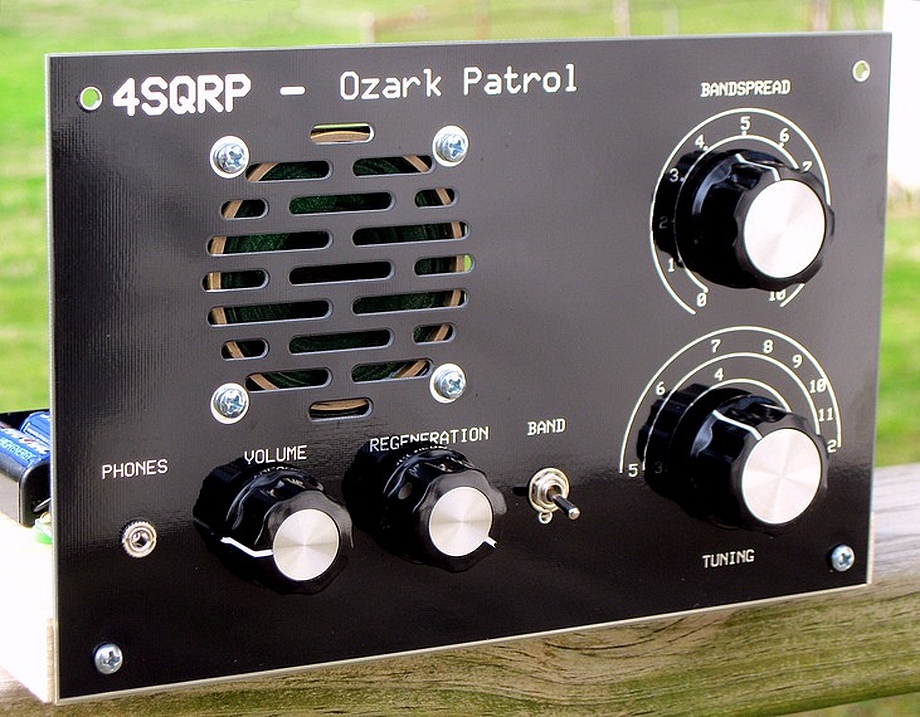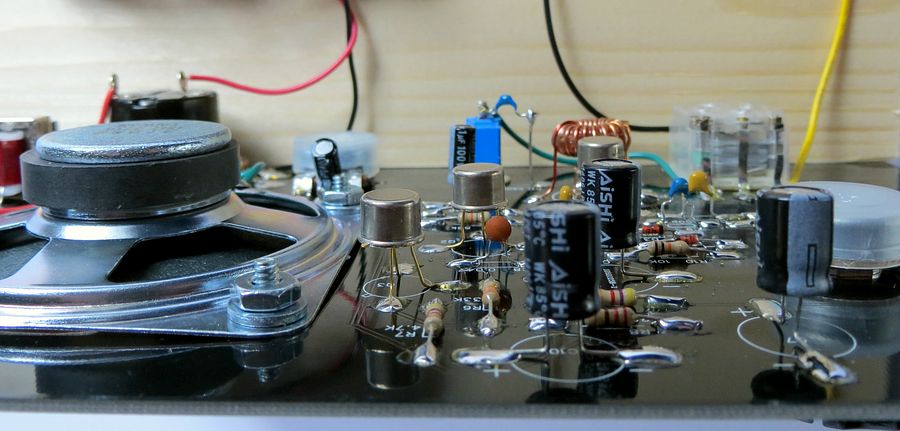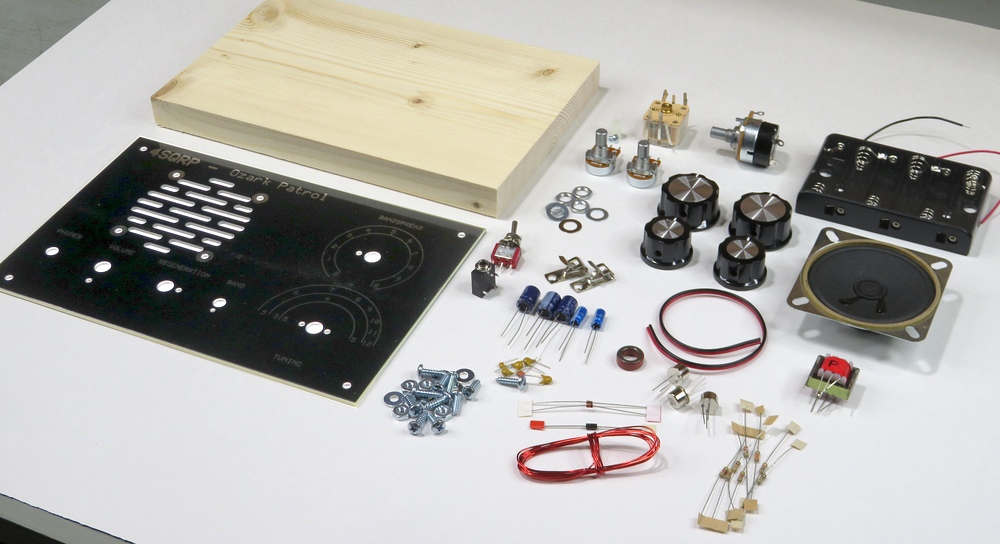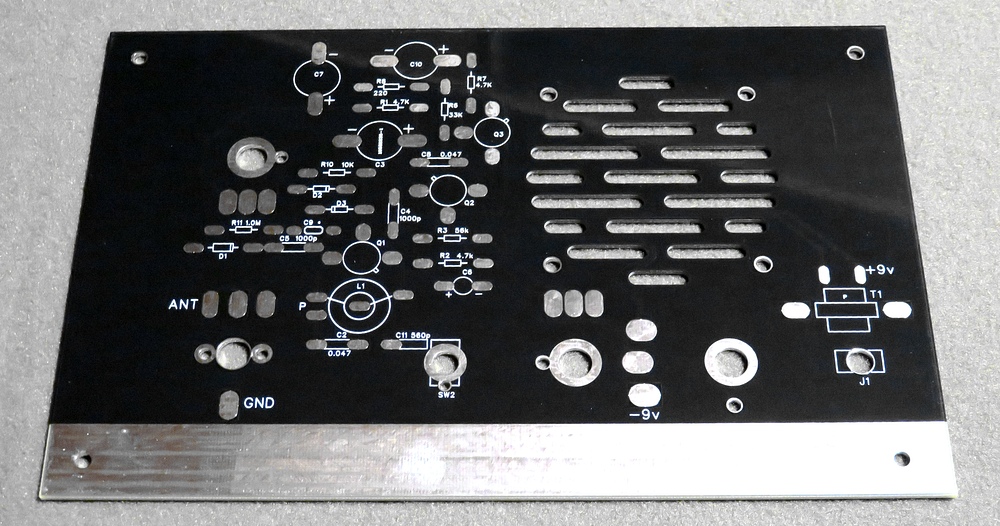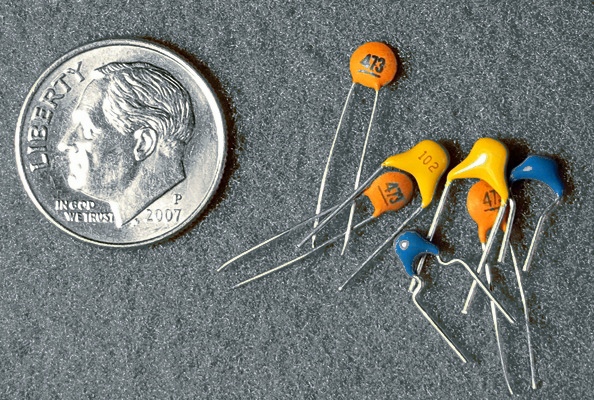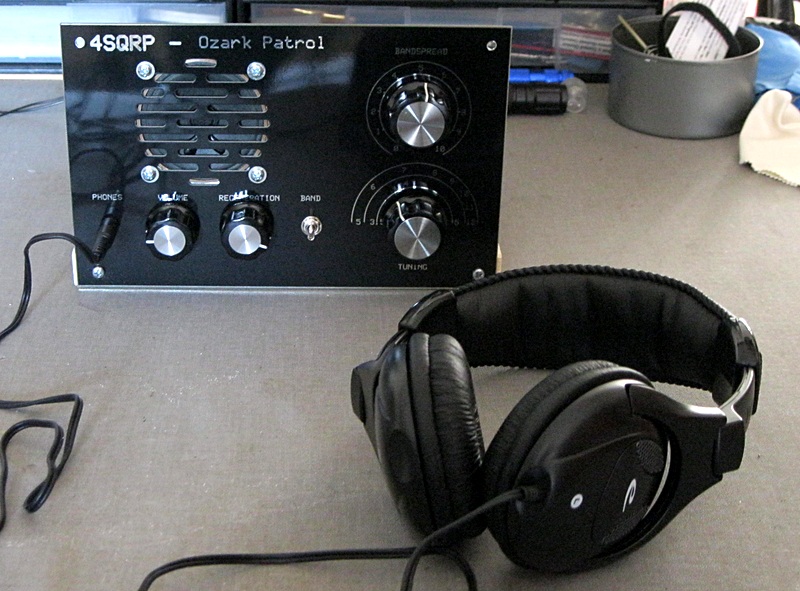 |
The
OZARK PATROL |
 |
|
|
|
|
An assembled
Ozark Patrol regenerative radio kit. It is produced by the
Four State QRP Group.
|
The regenerative radio circuit was
invented in 1912 by Edwin Armstrong. The Armstrong U.S.
Patent 1,113,149 was granted October 6, 1914. It was an
almost miraculous improvement over the radio receivers in
use at that time.
To avoid licensing fees, some companies offered kits you
could assemble yourself. This may sound a bit under-handed,
but the cost of a radio made it out of reach for many
households. If you had some basic skills and tools, a radio
kit that you assembled yourself would get you a radio at
half the price, as well as a bit of pride.
New and improved versions of regen kits emerged in the
1950s to the 1970s. The most famous of these were the Knight
Kit Ocean Hopper
and Space Spanner, the Radio Shack Globe Patrol
and the Lafayette KT-135 Explor-Air. The Ozark
Patrol was designed in homage to these kits. |
|
|
|
|
The kit utilizes
a soldering technique called "Pittsburg Style," where the
components are surface mounted onto a circuit board.
NOTE: The variable capacitor on the left, which tunes the
antenna, does not come with the kit |
|
| |
|
|
| The Pittsburg Style technique was
invented by Joe Porter, according to the Four State website.
Joe is from Pittsburg, ergo the name. That's Pittsburg,
Kansas not Pittsburgh, Pennsylvania. The kit is unique in that you solder the components to the circuit
board, yet the actual circuitry is hidden from view. The
circuit board is also the front panel. |
|
|
|
These are the parts you get with the kit.
Everything you need is here, except for the batteries (six AA size)
and the antenna wire. |
|
|
|
|
|
As with many kits, no knowledge of electronics is
required. If you can follow directions you can assemble the Ozark
Patrol. |
|
|
|
|
|
|
|
Some of the parts are very small. Years ago this
would have been a marvel of science. Today it is a pain in the neck.
To assemble the kit you have to identify parts stamped with numbers
smaller than the date on a dime, and you have to physically pick
them up with human fingers.
The circuit was designed by David Cripe. While you're trying to
solder the little capacitors in you can say, "Aw for Cripe's sake!" |
|
|
|
|
|
|
|
|
The radio covers
3.5 to 14 MHz. (Even though the largest number on the dial is "12.")
This all short wave, no AM broadcast band. International stations
and "hams" are heard. |
| |
|
So
how well does it work? Not bad for a three transistor regen /
reflex receiver. By
"reflex" we mean that part of the audio signal, as well as
the radio frequency signal, is used as feedback. The
feedback is controlled by the regeneration knob on the
front panel.
This radio has an AMAZING bandspread control! The front
panel is so shiny that I had a hard time photographing it.
Either I or the camera would appear reflected in the panel.
The two transistor amplifier lacks the ability to create
an adequate amount of volume in the little speaker, and it
sounds
tinny, but the earphone jack is there for a purpose. As a
matter of fact, you can hear a lot more with headphones than
you can through the speaker.
With your headphones on and your nimble fingers on the regen
and bandspread controls you can pick up plenty of shortwave
stations when the conditions are good. |
|
|
|
|
For more information,
plans, photos, prices, etc., click on the 4 State logo. |
 |
|
|
|
| |
|
|
| |


